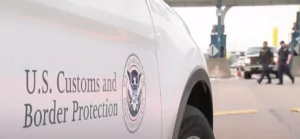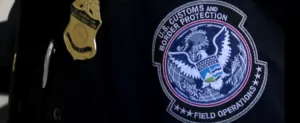CBP Currency Seizures
Since the inception of the Department of Homeland Security, CBP’s Fines, Penalties & Forfeitures Division has handled seizures by agents with three agencies:
- Homeland Security Investigations (HSI);
- U.S. Customs and Border Protection (CBP); and
- U.S. Immigration and Customs Enforcement (ICE).
Seizures of cash at the airport by law enforcement officers with CBP or HSI are widespread. In FY 2019, CBP commenced over 22,000 CAFRA forfeitures. Every day during 2022, CBP officers and agents seized an average of about $217,700 in unreported or illicit currency.
Customs agents might seize money before an international or domestic flight, especially if you carry over $10,000 in cash. Seizures by CBP are also common at Amtrak train stations, bus stations, and on the roadways.
Bringing over $10,000 on an international flight requires disclosing the amount of money in your possession on the FinCEN 105 form (sometimes called the “US Customs Money Declaration Form”).
After your money or property is seized, you will receive a “Notice of Seizure” letter that puts you on notice of the seizure and the alleged basis for forfeiture. The letter comes from the “U.S. Department of Homeland Security” because the United States Customs and Border Protection (CBP) is an operational and support component of the Department of Homeland Security.
How long does it take to get a seizure letter from customs? After the federal agent seizes the property, CBP has sixty (60) days to send a letter that acts as the “notice of seizure.” The notice of seizure letter also includes the CAFRA seized asset claim form that sets a 35-day deadline to file the verified claim.
Remember that you are NOT required to wait on the letter from Customs before filing the verified claim for court action.
If you have no claim to the item seized, you can ignore the customs seizure letter and allow CBP to take the property. On the other hand, if the property belongs to you and you want it back, you should immediately retain an attorney to help you fight the seizure instead of ignoring the letter from Customs and Border Protection.
Attorney for Seizures of Currency by CBP in Florida
The civil asset forfeiture attorneys in Tampa, FL, have represented clients in various seizure cases. Most of these seizures were conducted with federal agents with CBP or HSI involving more than $10,000 in cash seized at the airport.
In addition to airports, seizures are common at mass transit centers such as bus stations, train stations, and roadways throughout Florida and the rest of the United States.
No matter the value of the property seized, an attorney can help you fight to get the property back with interest.
If your property was seized by agents with Homeland Security Investigations (HSI) or U.S. Customs and Board Protection (CBP), contact an experienced criminal defense attorney in Tampa, Hillsborough County, FL.
The attorneys at Sammis Law Firm are experienced in helping travelers get their money or U.S. Currency back after a CBP seizure for forfeiture.
We understand why administrative procedures for remission or mitigation rarely work. Those who file a petition for relief through mitigation or remission often get no money back. The only way to challenge the legality of the taking is to demand “court action” through judicial referral.
We help clients file a verified claim letter, which starts the 90-day deadline for returning all of the money or filing a “complaint for forfeiture” in federal court. If federal agents illegally took your money at the airport, don’t let them keep it.
We are experienced in negotiating for a speedy refund of all seized property with the Senior Attorney at the Office of the Associate Chief Counsel of the U.S. Customs and Border Protection or the Assistant United States Attorney assigned to the case.
Instead of ignoring the customs seizure letter, hire an experienced attorney to show why the initial detention was illegal from the inception or why the forfeiture was unjustified.
Call 813-250-0500.
Reasons Not to Ignore the Customs “Notice of Seizure” Letter from CBP
People often ask: “What happens if I ignore the ‘notice of seizure’ letter from Customs and Border Protection?” CBP uses the following forms in currency seizure cases:
- CF 6051S: Custody Receipt for Seized Property and Evidence (11/2001);
- CF Form 6051A: Continuation Sheet Custody Receipt for Detained or Seized Property (11/2001);
- DHS Form 4605: Currency/Monetary Instrument Seizure Inventory (corresponds with CF 6051S).
Immediately after the seizure, the agent issues a receipt for the seized property on a form known as “CF 6051S: Custody Receipt for Seized Property and Evidence (11/2001),” which references DHS Handbook 5200-09. The agent might also issue a continuance sheet on CF Form 6051A.
How long does Customs have to send the notification letter? Within 60 days of the seizure, CBP must send a personal letter that acts as the “notice of seizure.” What if you never get the personal notice letter? The notice of seizure is also published online at forfeiture.gov.
What happens if you ignore the letter from Customs and Border Protection? If you ignore the notice of seizure letter from CBP, then CBP will note that you made no effort to “clear” the property.
The seizure history record will then show a notation documenting the alleged violation and associate that alleged violation with the person listed on the receipt or the notice of seizure. That notation leaves a “red flag” associated with the person’s name and address.
For these reasons, it is better not to ignore the CBP “notice of seizure” letter. If you want to regain your property, you should retain an attorney to file a demand for court action if the property came from a legitimate source and was intended for a legitimate purpose.
If the property was not from a legitimate source or intended for a legitimate purpose, you should NOT file a claim.
Busiest Airports for U.S. Currency Seizures by CBP
For travelers preparing to board an international or domestic flight, U.S. Currency is seized by federal agents with HSI or CBP at the airport, including the busiest airports in the United States:
- Tampa International Airport in Tampa, FL;
- Orlando International Airport (MCO) in Orlando, FL;
- Miami International Airport (MIA) in Miami, FL;
- Hartsfield–Jackson Atlanta International Airport (ATL) in Atlanta, GA;
- Los Angeles International Airport (LAX) in Los Angeles, CA;
- O’Hare International Airport (ORD) in Chicago, IL;
- Chicago Midway International Airport (MDW) in Chicago, IL;
- Dallas/Fort Worth International Airport (DFW) in Dallas, TX;
- Denver International Airport (DEN) in Denver, CO;
- John F. Kennedy International Airport (JFK) in New York City, NY;
- San Francisco International Airport (SFO) in San Francisco, CA;
- McCarran International Airport (LAS) in Las Vegas, NV;
- Seattle-Tacoma International Airport (SEA) in Seattle, WA;
- Charlotte Douglas International Airport (CLT) in Charlotte, NC;
- Newark Liberty International Airport (EWR) in Newark, NJ;
- George Bush Intercontinental Airport (IAH) in Houston, TX; and
- Detroit Metropolitan Airport (DTW) in Romulus, MI.
Cash or currency is the most commonly seized asset, but all types of property can be seized, including vehicles, vessels, aircraft, firearms, weapons, and ammunition.
Federal agencies even seize gold and other precious metals for forfeiture proceedings.
Basis of a CBP Seizure Before a Domestic Flight
Suppose the U.S. Currency is discovered before a domestic flight or during a layover. In that case, CBP might allege that the U.S. Currency was seized and is subject to forfeiture under the provisions of Title 18, United States Code, Section 981.
Those types of violations allege that the property was involved in transactions that:
- resulted in proceeds from some form of unlawful activity; or
- resulted in attempts to conduct such a financial transaction when either:
- the transaction involves the proceeds of drug sales; or
- the transaction represents the proceeds of specified unlawful activity related to the smuggling of controlled substances into the United States that facilitated the carrying on of the illicit transportation, sale, receipt, and/or possession of controlled substances and interstate trafficking.
Rules for Seizures by Federal Agents with CBP
According to the SEACATS Privacy Impact Assessment from 2017, “Once an arrest or seizure case is initiated, the initiating officer must submit the incident report in SEACATS to his or her supervisor within 24 hours of the arrest.”
According to ICE’s 2010 Homeland Security Investigations Handbook, agents are advised on the best way to seize property. The handbook provides:
“As a general rule, if total liabilities and costs incurred in seizing a real property or business exceed the value of the property, the property should not be seized.”
Once CBP Agrees to Release the Property, How Long Does it Take to Get the Check?
If the AUSA chooses not to file a complaint for forfeiture within the 90-day deadline, the agency will send your attorney a notification letter that provides:
“After review of the matter, the Government decided to release the property to your client.”
According to an attorney at the Office of Associate Chief Counsel for U.S. Customs and Border Protection, CAFRA requires the Government to release seized property pursuant to regulations promptly. 18 U.S.C. § 983(a)(3)(B). If that occurs, CBP typically sends a password-protected Judicial Forfeiture Declination Letter.
Additionally, CBP FPF must promptly provide a notification letter regarding the release of the property to include options and procedures as required by 28 C.F.R. § 8.13(b). The notification letter allows you to receive a refund through direct deposit by completing the ACH form or receiving a refund paper check.
If CBP decides to return the property, the Claimant must confirm with the Paralegal Specialist at CBP’s Fines, Penalties & Forfeitures Office whether the fund should be returned via direct deposit or check. CBP then informs NFC accordingly so that it can begin processing the payment.
CAFRA does not provide that seized property be returned before or within the 90-day deadline. CBP does not handle the return of funds. The National Finance Center (NFC) handles such matters. CBP claims to have no control over the NFC because it is a separate federal entity.
CBP claims that, on average, it takes NFC several weeks for payments.
Read more about getting your money back after CBP sends notice of final administrative action.
CPB’s Sample Form – Agreements for Release of Seized Currency
In some cases, the attorney for the claimant and the attorney for CBP might enter into a settlement agreement. CBP’s typical “Agreement for Release of Seized Currency” form provides the following:
AGREEMENT FOR RELEASE OF SEIZED CURRENCY
This Agreement is made between Claimant __________, represented in this matter by attorney __________, and the Department of Homeland Security, Customs and Border Protection (CBP).
This Agreement concerns the disposition of $_______ in U.S. Currency (hereinafter “Currency”), which CBP seized on [date] under Seizure No. ________, under the authority of Title 31, United States Code (USC), Section 5317.
In support of this settlement, the parties recognize the following:
- Claimants hereby withdraw their requests that judicial forfeiture proceedings be commenced against the Currency.
- CBP agrees to refund to Claimants $______ of the Currency. CBP will process the refund upon its receipt of this Agreement bearing the signature of Claimants and their attorney.
- Claimants agree to pay to CBP, in lieu of forfeiture, an amount equal to the balance of the Currency, i.e. $_____. This amount will be paid by deducting $_____ from the $____ seized from Claimants, leaving $____ to be returned to Claimants.
- This Agreement shall not constitute evidence or an admission of wrongdoing by any party.
- Except as specifically provided herein, this Agreement is without prejudice to any other rights of the parties.
- Claimant agrees to unconditionally release and forever discharge the United States Government, its employees, officers, agents, servants, successors, or assigns from any and all claims, demands, damages, causes of action or suits brought by any person, of whatever kind and description, which Claimant, their heirs, successors or assigns ever had, now have, or may have in the future in connection with, directly or indirectly, the seizure, detention and/or release of the Currency.
- This Agreement constitutes the complete understanding of the Parties. The Parties agree that no other promises or agreements shall be binding unless signed by all Parties and that there are no implied terms or conditions of this Agreement.
- The parties agree to bear their own costs and attorney’s fees, if any.
- This Agreement may be executed in counterparts. Any signatures received via facsimile or by email as a .pdf file shall constitute originals for purposes of the Agreement.
- The parties agree to execute any additional documents necessary to implement this Agreement.
________
Claimant
________
Date
Detentions of Goods or Merchandise by CBP
Over the years, our attorneys have dealt with various problems when CBP detains goods or merchandise. We help clients resolve the “Notice of Detention” on the best possible terms.
Our client might also receive a Customs and Border Protection (CBP) Detention Notice and Custody Receipt for Detained Property, Handbook 5200-09 when the property is “detained pending seizure.”
Other forms include the Custody Receipt for Seized Property and Evidence (Form), a document given to a traveler by an agent at an airport or border crossing if money is seized. It is part of Handbook 5200-09, titled Seized Asset Handbook.
If an examination by U.S. Customs and Border Protection (CBP) is related to trade compliance, the goods or merchandise might be inspected for the following types of concerns:
- compliance with the regulatory requirements imposed by other federal agencies, including:
- the CBP (including seizures by agents with Homeland Security Investigations (HSI);
- the ATF;
- the IRS;
- the DEA; or
- the FBI.
- intellectual property rights (IPR) issues or violations for marks or trademarks;
- improper labeling of the goods;
- improper markings of the goods;
- improper origin claims;
- the valuation or classification of the goods;
- improper reporting on invoices for quantity or descriptions; or
- safety issues.
If the issues impact the admissibility of the goods or merchandise, then the CBP might be required to detain and seize the goods or merchandise.
Within five days of arrival, goods might be “detained” by federal agents with U.S. Customs and Border Protection (CBP). Within five days after the detention begins, the CBP must issue a formal “Notice of Detention.”
As a practical matter, this typically requires the “Notice of Detention by CBP” to be issued within ten (10) days after arrival, excluding weekends and holidays. If the federal agents fail to follow the rules and act within the deadlines, the claimant’s attorney might be able to force the agency to return the property and pay interest and attorney fees.
The Notice of Detention issued by CBP must explain the following:
- the specific reason why CBP detained the goods or merchandise;
- the nature of any tests or inquiries to be conducted; and
- the nature of any information that, if supplied to CBP, will speed up the disposition of the detention.
The detention might become a seizure case if the issues are unresolved. The issuance of a seizure notice is necessary to begin the legal process for the forfeiture of the importer’s goods or merchandise.
The importer can then file a claim for court action or judicial review, which is the best way to get the goods back quickly. If the importer doesn’t act quickly, the goods or merchandise may be sent for auction or destruction.
Additional Resources
List of Property Seized by the U.S. Customs and Board Protection (CBP) – Find the official notifications listing property seized by U.S. Customs and Border Protection. Find the status of seized property and how you can fight for its return. Find answers to questions about what to do if Customs and Border Protection (CBP) seize or take your property. After the seizure, the case is referred to the Fines, Penalties, and Forfeitures (FP&F) office within three working days. Within 60 days of the seizure, CBP’s FP&F Officer must send any interested parties a personal letter containing the “notice of seizure.” CBP’s letter explains how to demand court action or petition for relief.
CBP’s Petition for Relief from Forfeiture on Form 4630 – Visit the U.S. Customs and Border Protection (CBP) agency website to find a pdf version of Form 4630 for filing a petition for relief from forfeiture. By using CBP Form 4630 (06/09), you are permitting CBP to decide your request to release property by Title 8, Code of Federal Regulations, Part 274. The form requests CBP to consider a petition for relief from forfeiture administratively to obtain the release of property. In part I, you must list the seizure case number, the time, the date of the seizure, and the location where the property was taken. Part II requires you to provide “certified copies” of any documentary evidence establishing your interest in the seized property, including receipts, purchase contracts, and bills of sale. You must describe the seized property and explain your interest in that property. Form 4630 requires you to list the circumstances that justify relief from forfeiture and proof of the claim.
How the CBP Official Notification is Posted – Search the U.S. Customs and Border Protection (“CBP”) legal notice published weekly on the centralized www.forfeiture.gov website for forfeiture actions across all federal agencies. The CBP must give proper notice that the property listed on the notification was seized for federal forfeiture for violating federal law. The public can find the rules, procedures, and laws that apply to the forfeiture process listed on the website or in 19 U.S.C. Sections 1602 – 1619, 18 U.S.C. Section 983, and 28 C.F.R. Parts 8 and 9. From the website, you can petition for relief or demand court action.
This article was last updated on Tuesday, February 20, 2024.








